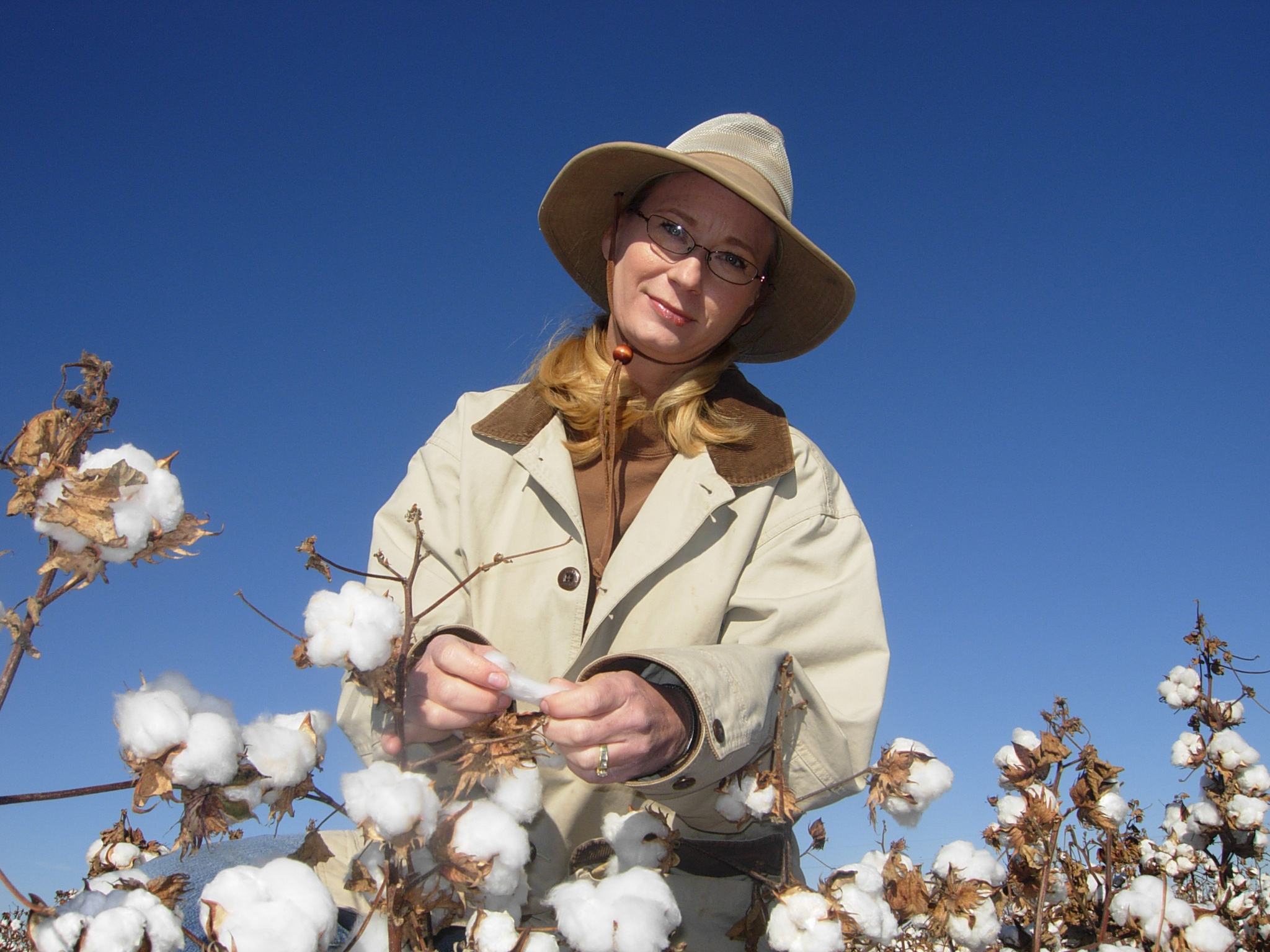Cotton breeders at Texas A&M are developing organic cotton plants with a unique leaf shape that could help organic farmers distinguish their plants from genetically modified cotton and minimize cross pollination and contamination from the GM plants.
Jane Dever, professor and cotton breeder at Texas A&M AgriLife Research, leads the project.
“We are developing a strategy to provide farmers with a good cotton variety that will help them alleviate contamination from GMOs in a cost-effective way,” Dever says.
Dever brings unique experience to her work. Prior to joining Texas A&M, she was global cotton breeding manager for Bayer CropScience developing genetically modified cotton. Now she is helping Texas organic farmers keep GMOs out of their crops.
“I am very comfortable here,” she says. “This is a great opportunity to work for Texas cotton producers and the more than 90 percent of U.S. organic cotton producers located on the Texas High Plains.”
Organic cotton production increasing in Texas
Organic cotton farming in Texas has grown from virtually nothing in the early 1990s to more than 20,000 acres in 2015. Texas leads the U.S. with as much as 90 percent of nationwide organic cotton production.
The Texas Organic Cotton Marketing Cooperative (TOCMC) leads the state’s production. In 2015, its 50 farm family members harvested 14,000 organic bales and 1,200 transitional bales.
One of the biggest challenges facing Texas organic cotton farmers is contamination from genetically modified varieties. According to Dever, nearly 99 percent of the cotton grown in Texas is GMO.
“Farmers are trying to coexist with the overwhelming preponderance of GM cotton,” she says.
While cotton is a self-pollinating plant, it can also be insect pollinated. “The cotton flower is large and attractive to pollinators,” Dever says.
There are also few seed choices available to both organic and non-GMO cotton farmers. In 2015, there were 84 cottonseed varieties available for planting and only four of those were non-GMO, according to Dever.
“Organic and non-GMO cotton farmers have very limited seed choices. That’s what we’re trying to address,” she says.
Develop different leaves to distinguish organic from GMO
Dever and graduate student Heather Elkins, who receives a graduate fellowship from Seed Matters, are developing solutions to address the GMO threat to organic cotton. The project’s goal is to breed organic cotton plants with a different leaf shape than GM cotton plants. According to Elkins there are cotton varieties with finger-shaped leaves similar to those of okra plants. Most conventional and GM cotton plants have fuller leaves similar to those of maple trees. Elkins is trying to get the okra leaf trait, a recessive trait in cotton plants, to express in organic cotton varieties, thus allowing organic farmers to distinguish their plants from the fuller leaf GMO plants.
“Farmers could remove plants that have the normal leaf and an intermediate leaf, which is between the okra and normal leaf,” Elkins says. “It is easily seen, very visible.”
Beyond minimizing the GMO threat, the project also needs to produce viable seeds for cotton production.
“Our main objective is to develop varieties that work well in their production system and have characteristics they need to produce consistent fiber qualities in challenging Texas weather conditions,” Dever says.
Dever aims to develop one or two good okra leaf cottonseed varieties that could be available for farmers by 2020.
Better seed varieties will help TOCMC farmers continue to thrive in the fast-growing organic cotton market, which is valued at more than $15 billion according to the Textile Exchange.
Non-GMO cotton farmers could also benefit from the okra leaf seed varieties.
Dever says more Texas farmers are interested growing non-GMO and organic cotton. “There is more interest every year because of weed resistance (to herbicide tolerant GM cotton varieties).”
Another market for organic cotton farmers has opened with cottonseed, which is being used as feed for organic dairy operations in Texas. “This is even more incentive for growers to consider organic,” Dever says.









